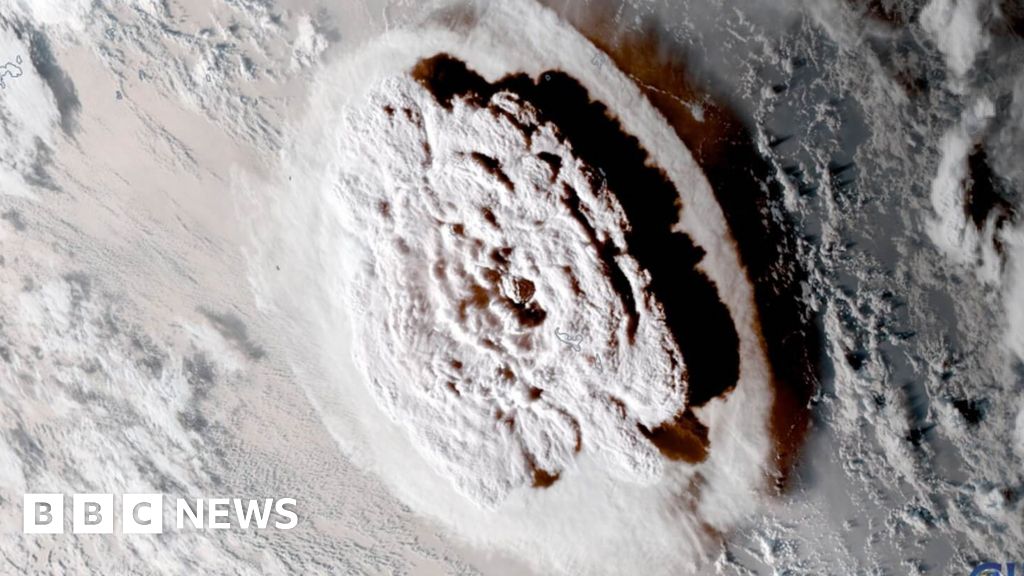Silver Lifetime
- Messages
- 5,685
- Reactions
- 13,912
One geologist stated the explosion was one of the loudest sounds ever heard. It was heard over 5,000 mi away in Homer, AK. High water hit the coast of S. America.
Follow along with the video below to see how to install our site as a web app on your home screen.
Note: This feature may not be available in some browsers.
Your on the right track, but don't forget surge velocity and the volume behind it that drives it! Take a measure of a known volume of water , add it's wave height, and it's speed, and multiply that times distance and gradient, that gets you close to an acceptable answer you can predict from!So I understand the water can go a long ways inshore. But I have a hard time understanding how the water can go up hill. Granted if a 2.5" higher then normal wave hits a beach it will travel up the beach until it reaches land more then 2.5ft above where a normal wave would hit. How would that wave/water reach 4ft say?
This is probably not a very elegant explanation, and a physicist could probably do better, but I'm guessing that it is being pushed uphill by the water behind it. It cannot recede as long as water continues to flow inshore. It's about wave length, not wave height.So I understand the water can go a long ways inshore. But I have a hard time understanding how the water can go up hill. Granted if a 2.5" higher then normal wave hits a beach it will travel up the beach until it reaches land more then 2.5ft above where a normal wave would hit. How would that wave/water reach 4ft say?

The footage from the 2011 Japan Tsunami is absolutely incredible.It is not the height of the wave that matters in a tsunami. It is the amount of water behind it (wave length) it and how far inland it travels. They don't always stop on the beach like normal ocean waves. The farther inland it travels, particularly in populated areas, the more debris it tends to carry out to sea when the wave recedes. Then subsequent waves are a churning mass of water and debris which are particularly dangerous to anyone trapped in the water.
"Tsunamis have a small wave height offshore, and a very long wavelength (often hundreds of kilometres long, whereas normal ocean waves have a wavelength of only 30 or 40 metres),[34]which is why they generally pass unnoticed at sea, forming only a slight swell usually about 300 millimetres (12 in) above the normal sea surface. They grow in height when they reach shallower water, in a wave shoaling process described below. A tsunami can occur in any tidal state and even at low tide can still inundate coastal areas." from wikipedia.
Here is a good video from Japan showing how a very small in height wave becomes particularly destructive as the massive amount of water gets channeled up a river estuary.
 www.google.com
www.google.com
| The Tongan government released its first update after a massive volcanic eruption and resulting tsunami hit the island nation, calling it an "unprecedented disaster." The country is reporting nearly all the homes on two islands were destroyed, with three confirmed deaths—a 65-year-old woman, a 49-year-old man, and a British citizen. The number is expected to rise as the government has been unable to reach several inhabited islands—communications were scarce after an underwater cable was cut off in the eruption. In addition, ash has coated the main island, contaminating drinking water and delaying international relief flights. Separately, unusually high waves after the eruption caused an oil spill covering almost 2 miles of Peru's central coastline. See before and after photos of the damage in Tonga here. |
Tonga undersea volcano eruption released up to 18 megatons of energy.An undersea volcanic eruption occurred 40 miles off the coast of the South Pacific country of Tonga on Saturday.
Satellite imagery shows the eruption unleashed a massive shockwave as a plume of ash was flung 12.4 miles into the atmosphere.
US Storm Watch said the eruption was the "most violent" eruption ever captured on satellite footage.
Some have compared the eruption to the "Hiroshima" nuclear bomb explosion.